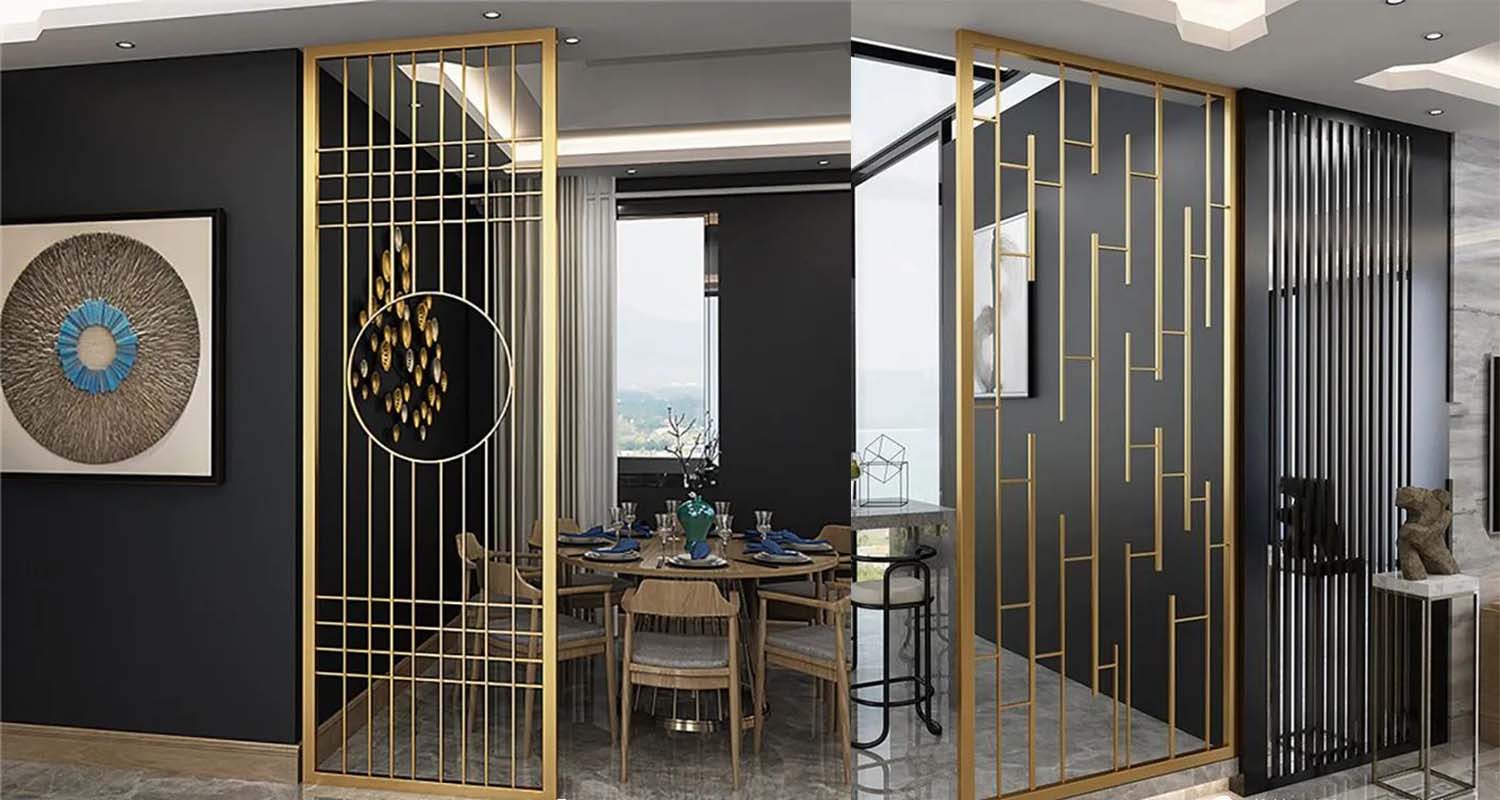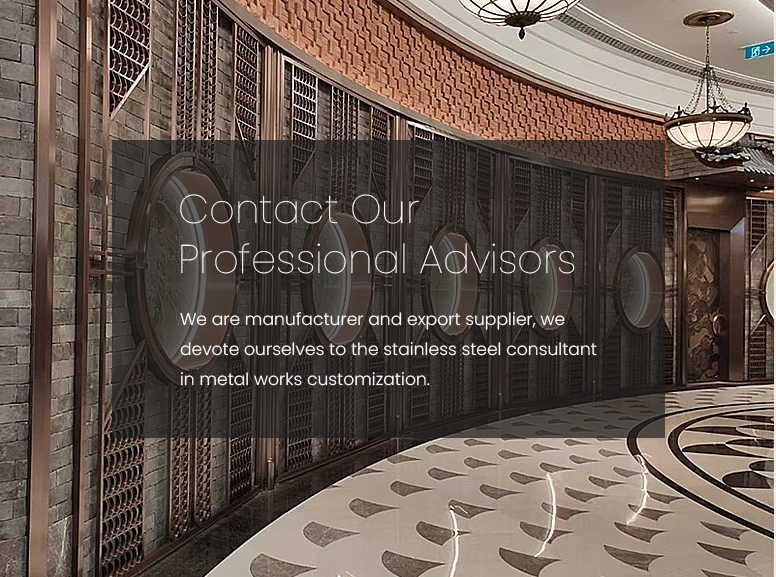Screen partitions are elements that are often used in the decoration process. From the perspective of production materials, there are stainless steel screen partitions, aluminum alloy, stainless steel, copper, iron, and other materials. So what is the difference between stainless steel and aluminum alloy screen partitions?
1. Stainless steel screen and aluminum alloy screen
1.1 Stainless steel + glass screen
Stainless steel glass screen is a kind of stainless steel screen, which uses stainless steel as the frame of the glass screen, which has higher hardness compared with other materials. Metal can be customized according to different needs of customers. Make colors, such as hotel glass partitions. There are common colors such as titanium gold, rose gold, champagne gold, black titanium and coffee black. In shopping malls, shops, banks and office buildings, low-key black titanium and brown colors should be selected to highlight commerciality. Stainless steel has a stable structure, high reusability and high fire resistance.
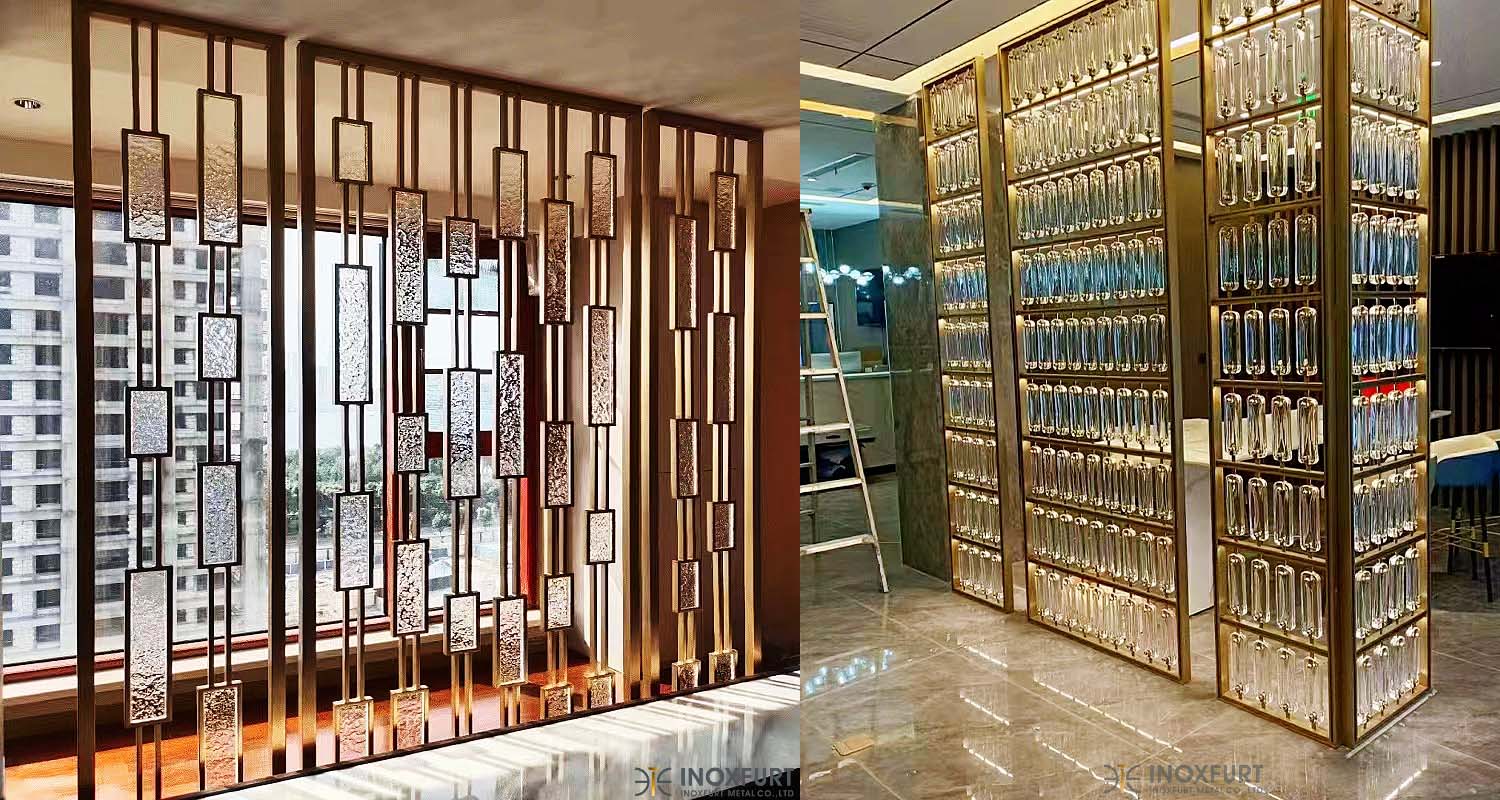
2. Aluminum alloy screen
The aluminum alloy screen adopts the aluminum alloy frame as the decorative fixing material, and the integral glass is installed inside the aluminum alloy frame; single layer or double layer, forming an overall partition wall effect. Widely used in office, automobile exhibition hall, home decoration. The specifications and workmanship of the aluminum alloy frame and glass can be customized according to customer requirements. Aluminum alloy profile thickness 1.2mm-2.0mm, surface treatment, anodizing, powder coating, acrylic, fluorocarbon spraying, electroplating process, wood grain process, etc.
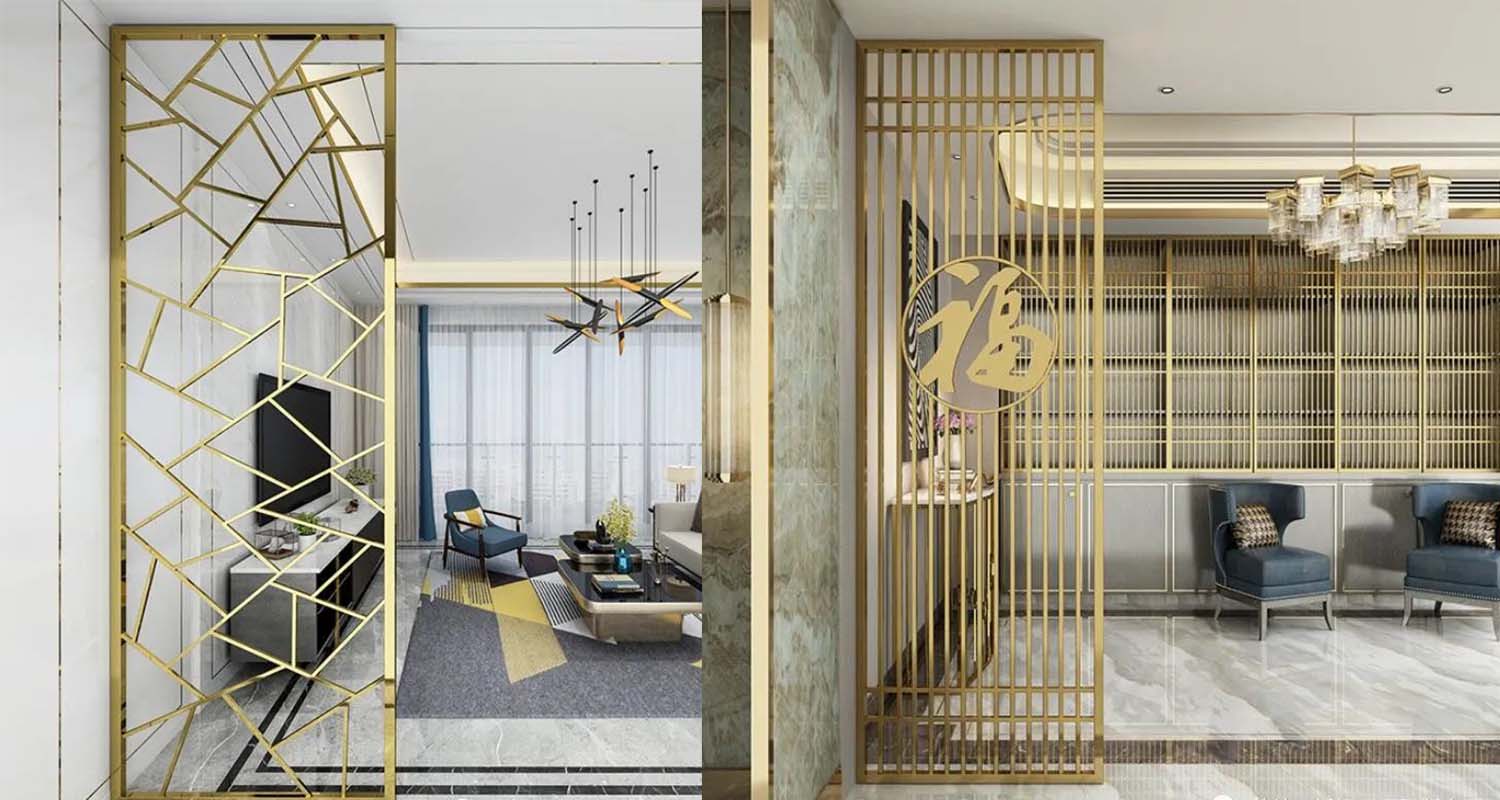
3. Common features of stainless steel screens and aluminum alloy screens
There are many types of screens, which can be freely combined and designed according to customer requirements. In terms of material selection, most of them are custom-made metal materials, which are waterproof, moisture-proof, wear-resistant, corrosion-resistant, and fire-resistant. At the same time, they also have the luster of the metal itself, which can set off the atmosphere of the environment. Therefore, companies should pay special attention when choosing products. The use of new materials and new technologies can make up for the common defects of market products to a large extent, giving you more free choices.
The screen decoration application range:
Office buildings, expositions, large and small meeting rooms, hotel multi-function halls, high-end villas, colleges, banks, hospitals, shopping malls and other places, these places basically occupy the vast majority of the current partition market share. There are many types of partitions on the market, such as aluminum alloy partitions, stainless steel partitions, galvanized sheet partitions, and copper screen partitions.
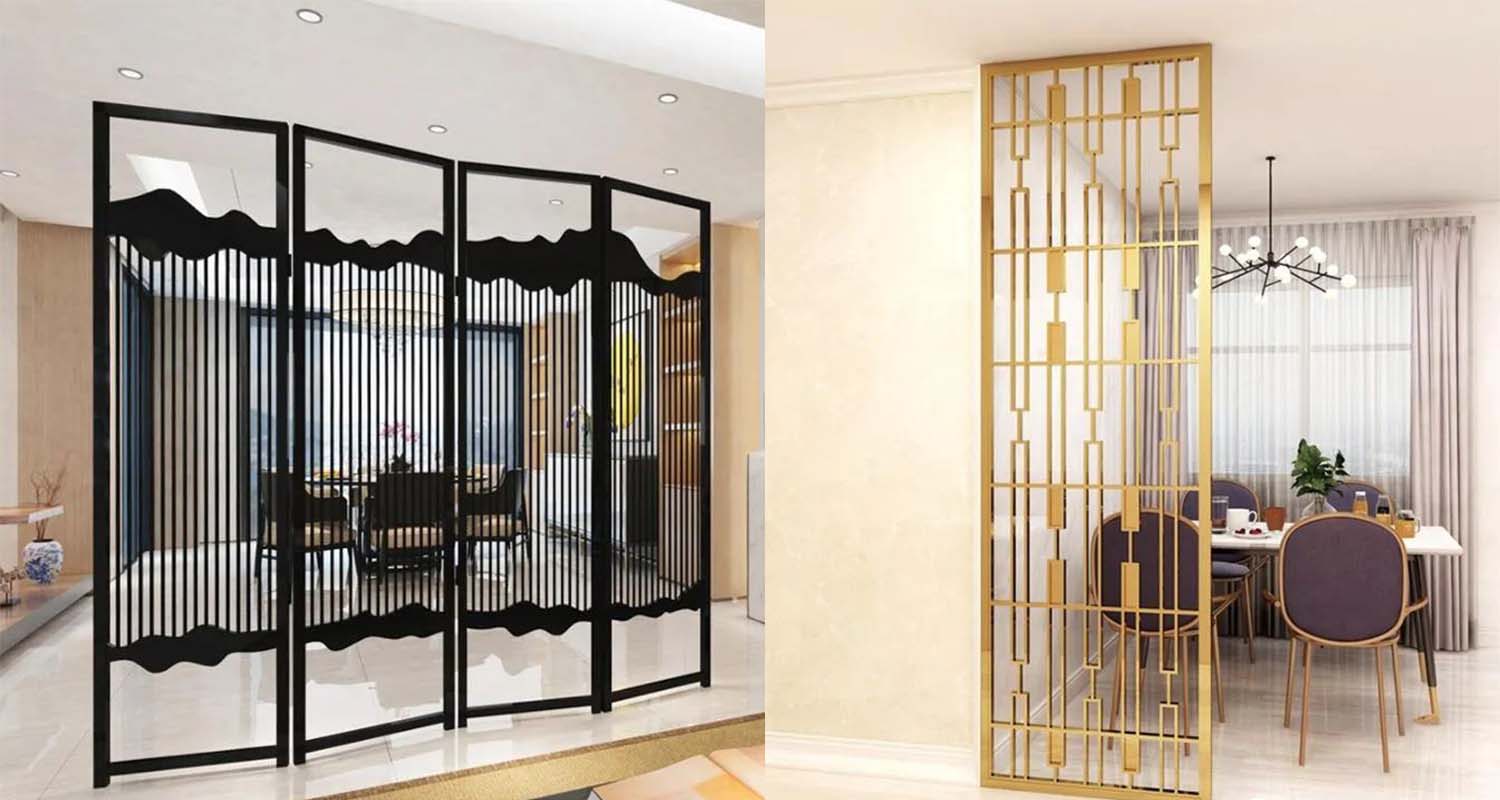
4. Which one is better, the stainless steel partition wall or the aluminum alloy partition wall?
4.1. Stainless steel partition walls have more textures than aluminum alloy partition walls. The surface can be used for brushed, mirrored, sandblasted and other effects. The color is bright and durable, suitable for decoration in high-end places.
4.2. The aluminum alloy partition wall is light in weight, and the colors are mostly white and natural colors. Although such a glass partition is simple, it is inevitably monotonous. Due to the low density and low hardness of the aluminum alloy partition wall, it is easy to deform after impact. Generally, due to the lack of aesthetic factors, it is only suitable for warehouses, temporary and simple office buildings.
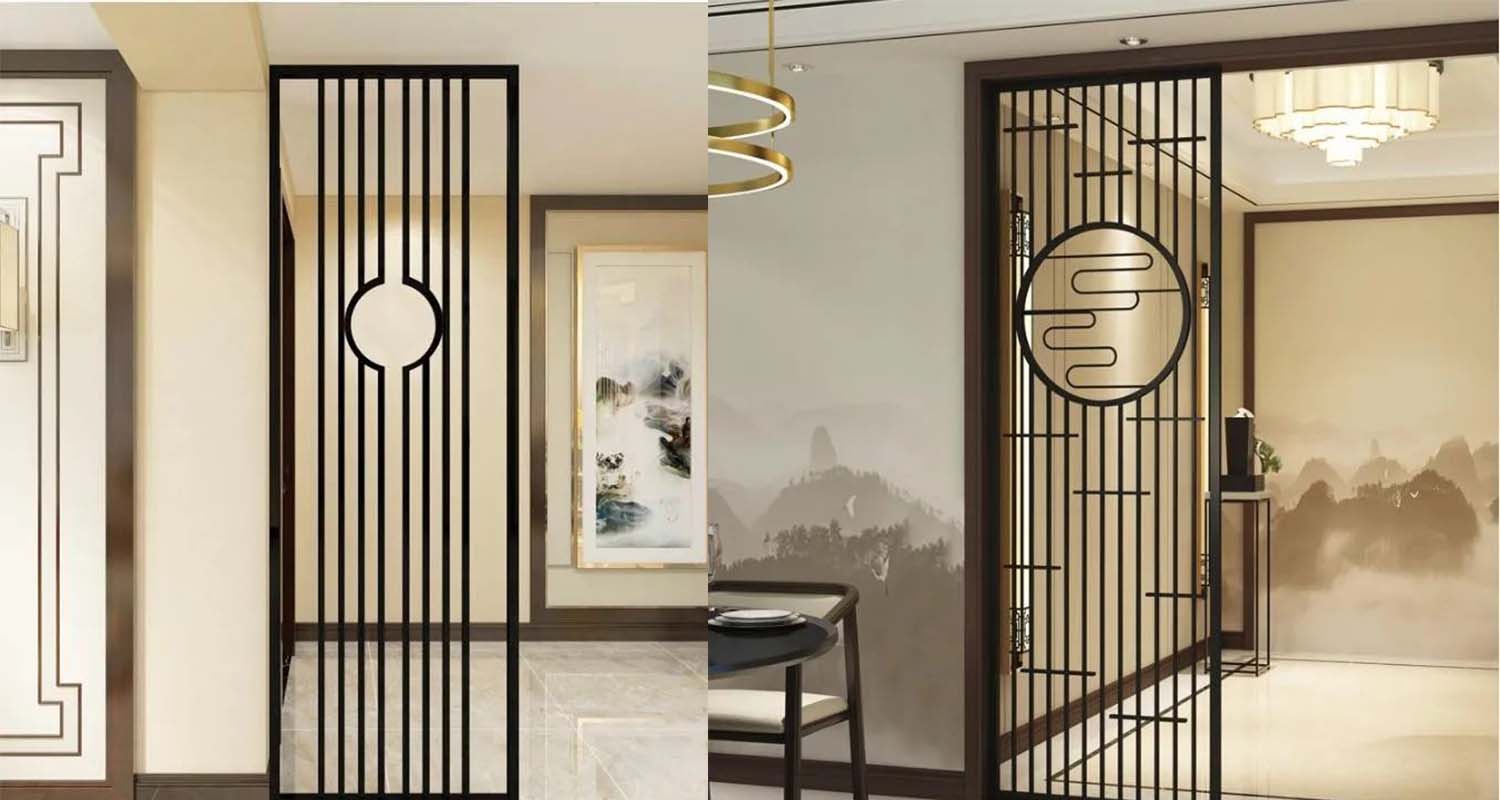
Everything has two sides. Stainless steel screens and aluminum alloy screens have their own advantages and characteristics, but there are also some disadvantages. For customers with different needs, the specific needs are also different, so the actual situation should prevail when choosing.
In the application of stainless steel plates, the processing requirements for the plates are usually higher. At present, the mainstream sheet metal processing methods include laser cutting, CNC grooving, bending, etc.
